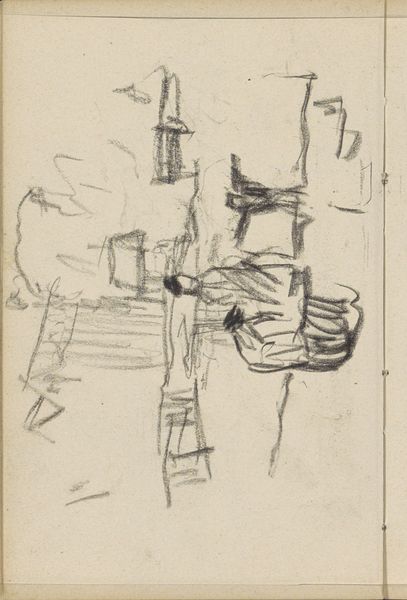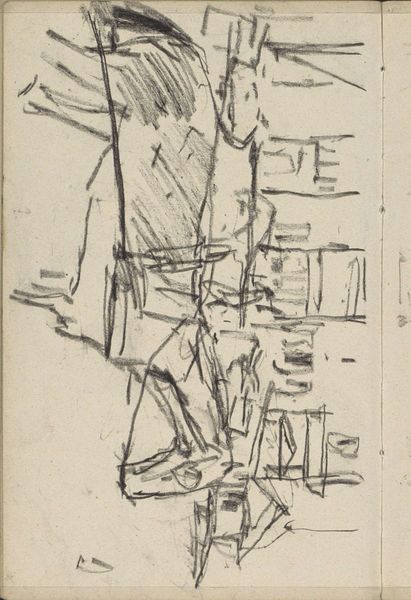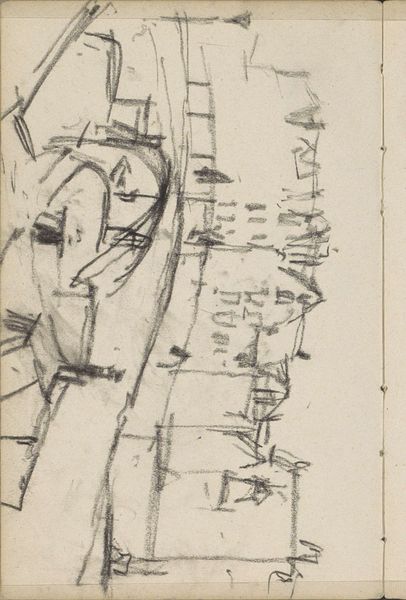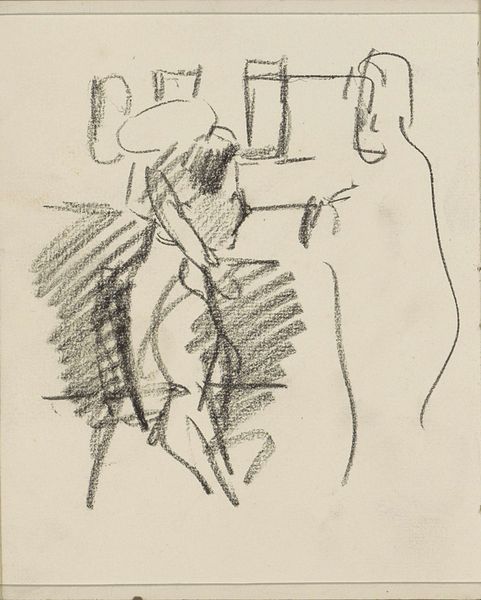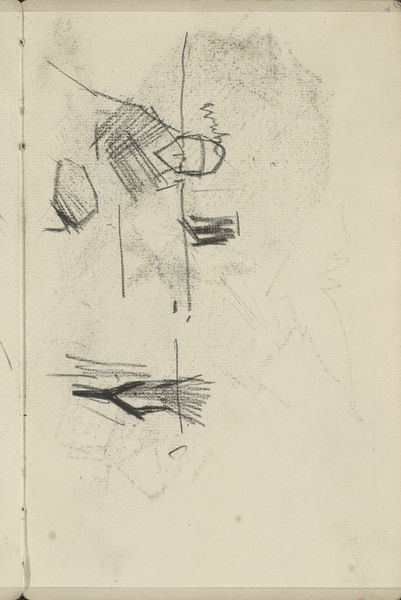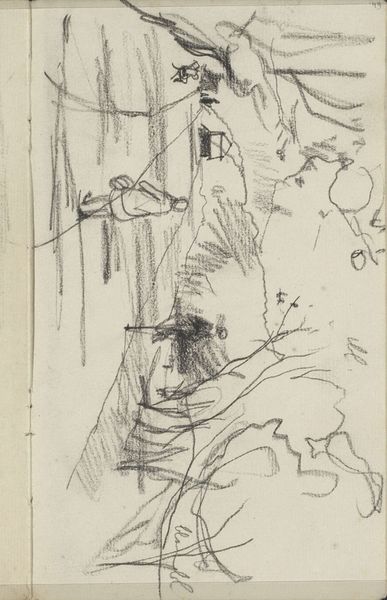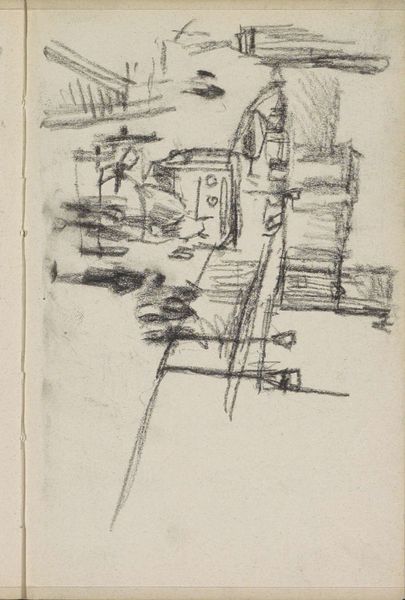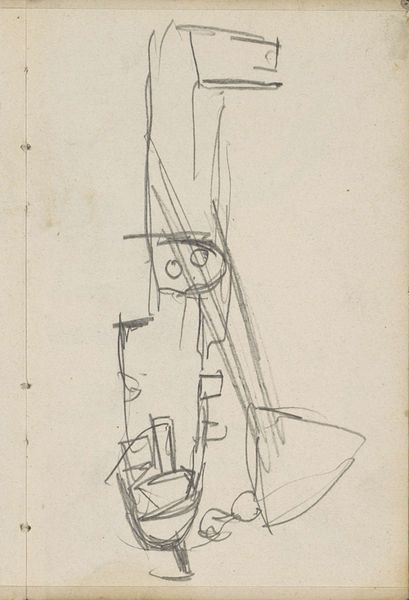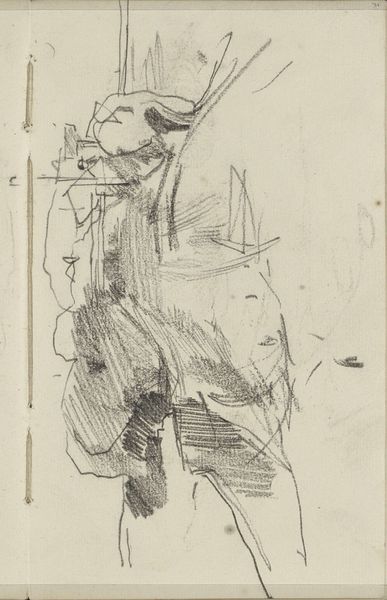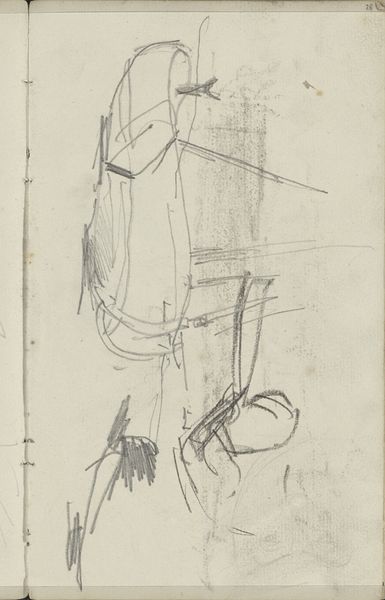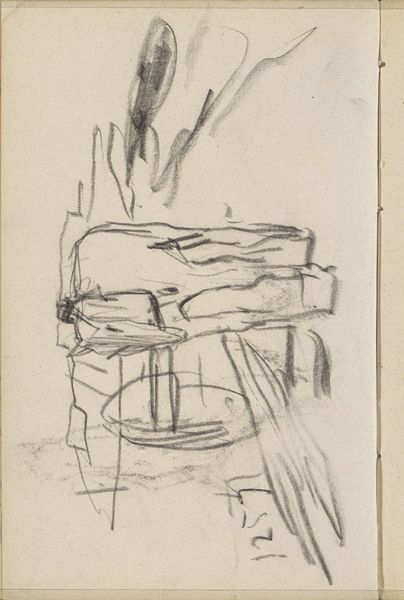
Sloterdijkbrug en Prinseneiland te Amsterdam, gezien vanaf de Nieuwe Teertuinen Possibly 1907 - 1911
0:00
0:00
Copyright: Rijks Museum: Open Domain
Curator: This drawing, titled "Sloterdijkbrug en Prinseneiland te Amsterdam, gezien vanaf de Nieuwe Teertuinen," by George Hendrik Breitner, was likely created between 1907 and 1911. Editor: It strikes me as incomplete somehow—very raw and gestural. Like a fleeting impression, or a memory half-formed. The sparse lines almost feel melancholy. Curator: Breitner was, after all, a key figure in the Amsterdam Impressionist movement. His work often aimed to capture the transient moments of urban life. The Sloterdijk Bridge, a vital structure connecting the city, becomes less about the steel and more about capturing a mood. Bridges are themselves potent symbols, mediating between disparate things. Editor: It makes you wonder what exactly Breitner sought to connect here, or perhaps what social divisions he witnessed. The stark graphite medium amplifies the contrast. Look at the people – barely sketched. What's emphasized aren’t the individuals, but rather, the urban environment, which highlights the effects of modernization and perhaps displacement of local populations. Curator: Interestingly, he employs a restricted visual palette—nearly monochromatic, only stark graphite—but it’s remarkably effective at capturing the quality of light. Notice the shapes too; the rhythmic repetition of circles beside the bridge structure. Those evoke an otherworldly, perhaps celestial realm. It invites consideration of liminal states or transformation of ordinary reality into something transcendent. Editor: I see it also as Breitner attempting to visually navigate the evolving socio-economic realities. Those blurred lines remind me of the erasure of collective memory in urban planning, especially the voices of vulnerable people whom this urban renewal impacted disproportionately. The sketch becomes more about an omission. Curator: Your point encourages me to contemplate it as a witness statement or fragment, as much for what’s not there as for what is there. Its lack of refinement is less an accident of art and rather an embodiment of how we can only ever truly know things imperfectly. Editor: Precisely. And those imperfect impressions can sometimes reveal deeper truths about the historical currents we’re caught in, even a century later.
Comments
No comments
Be the first to comment and join the conversation on the ultimate creative platform.


